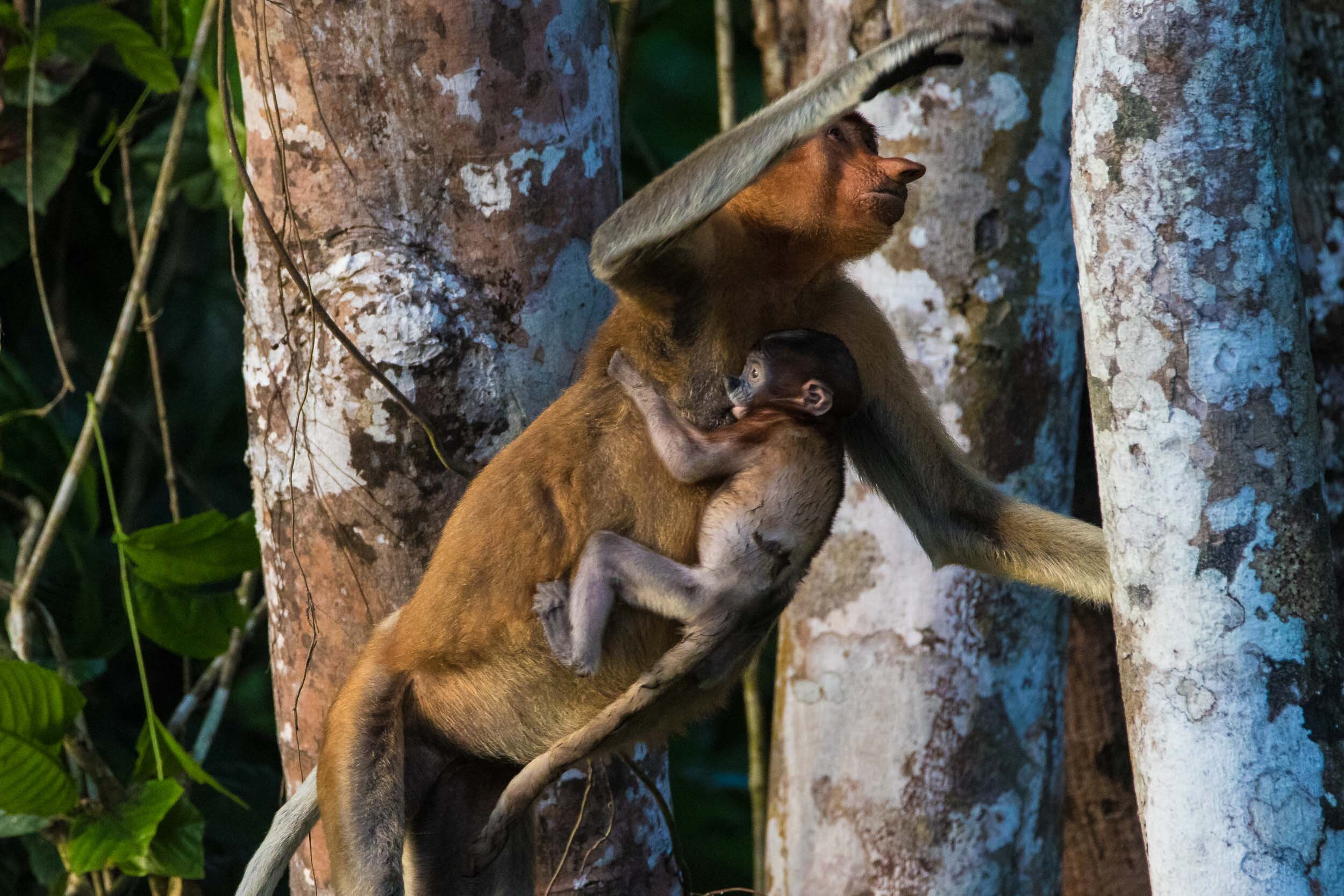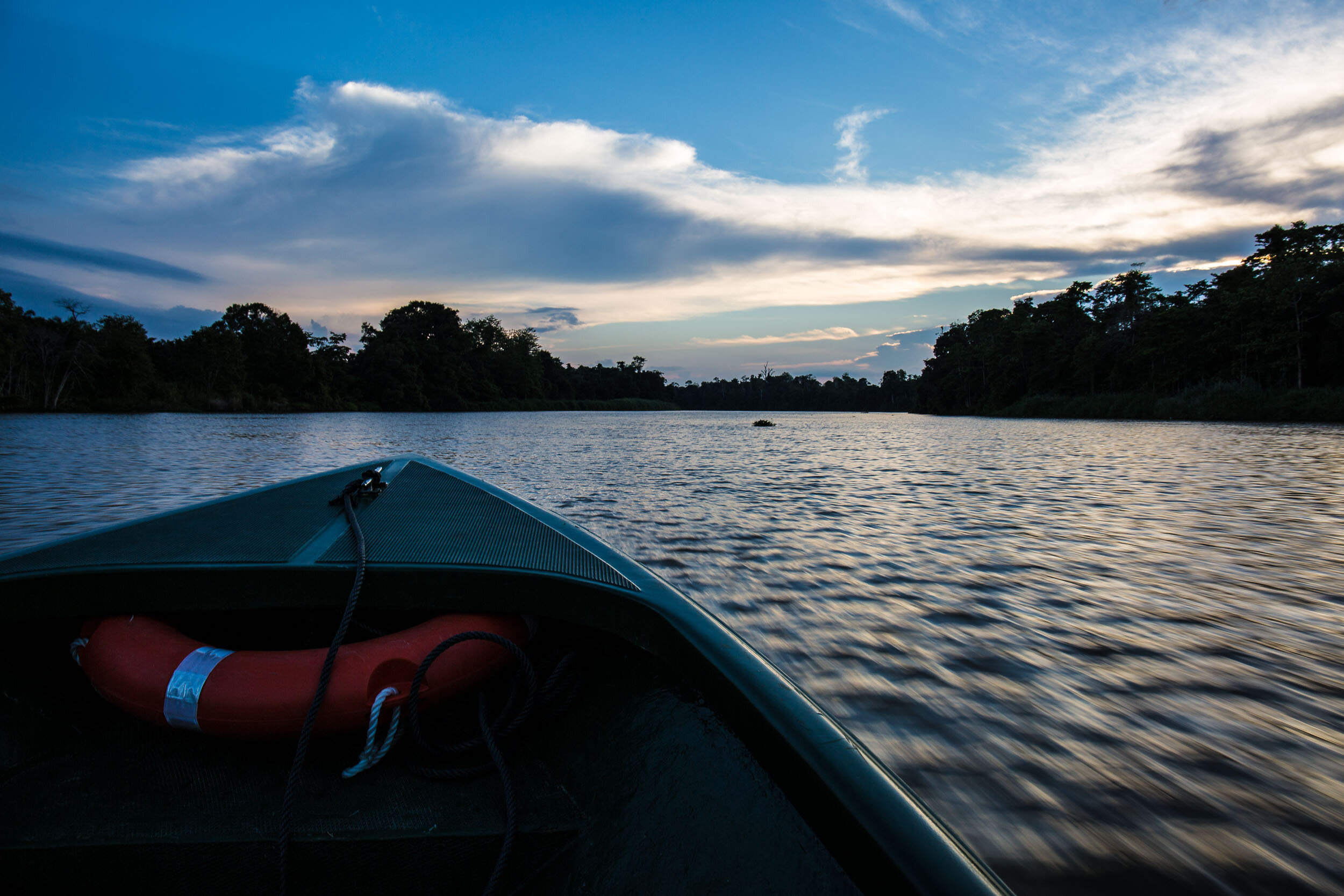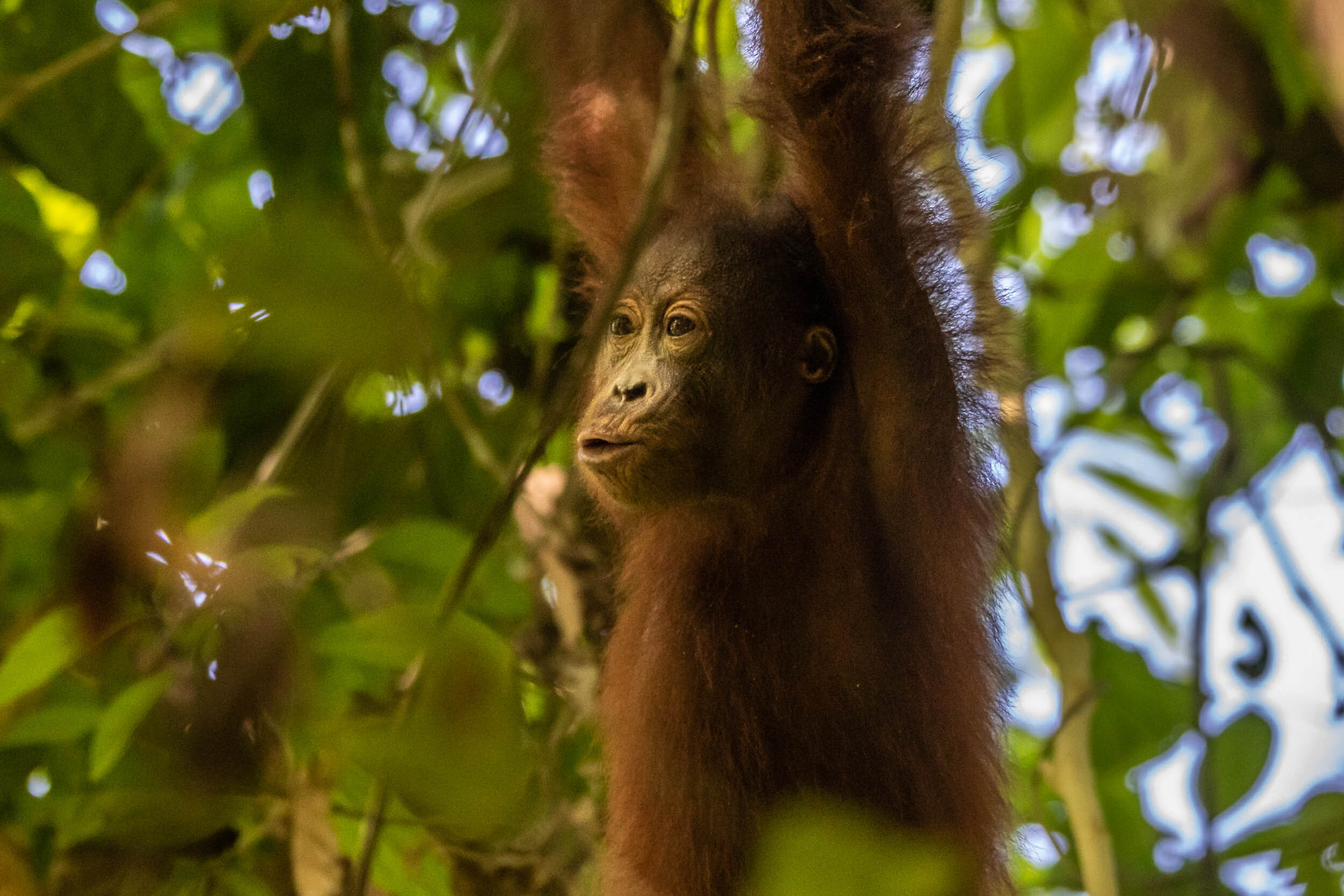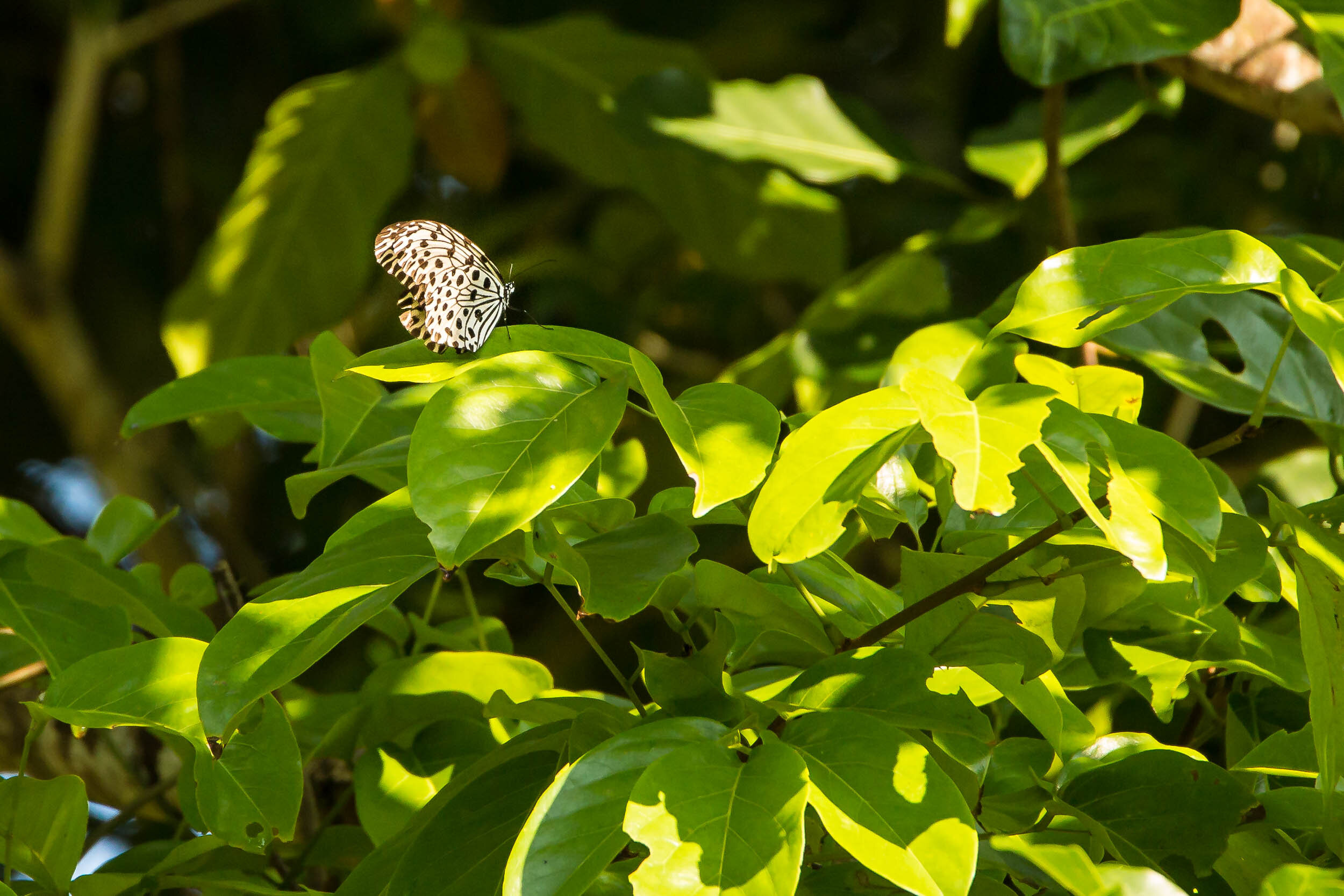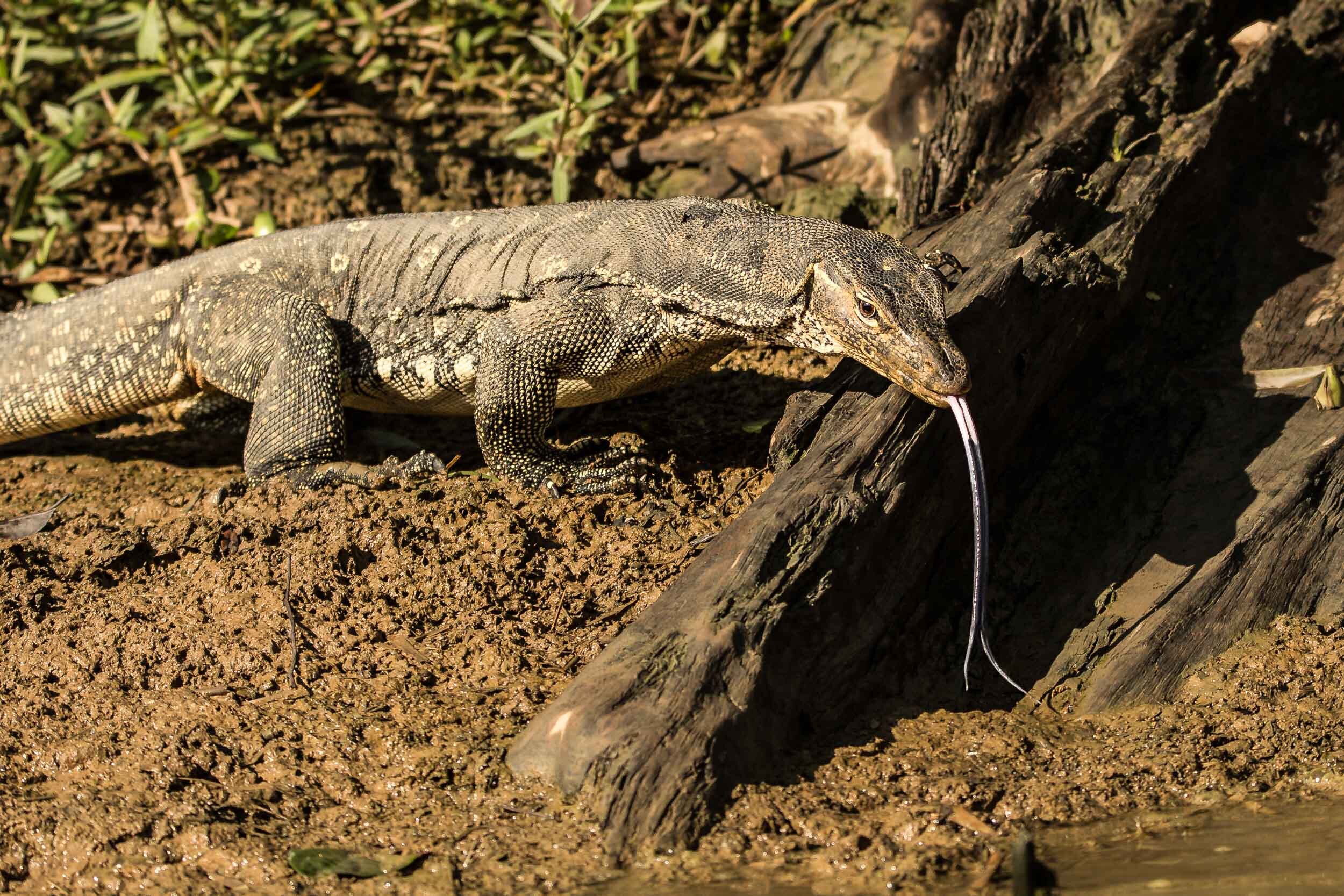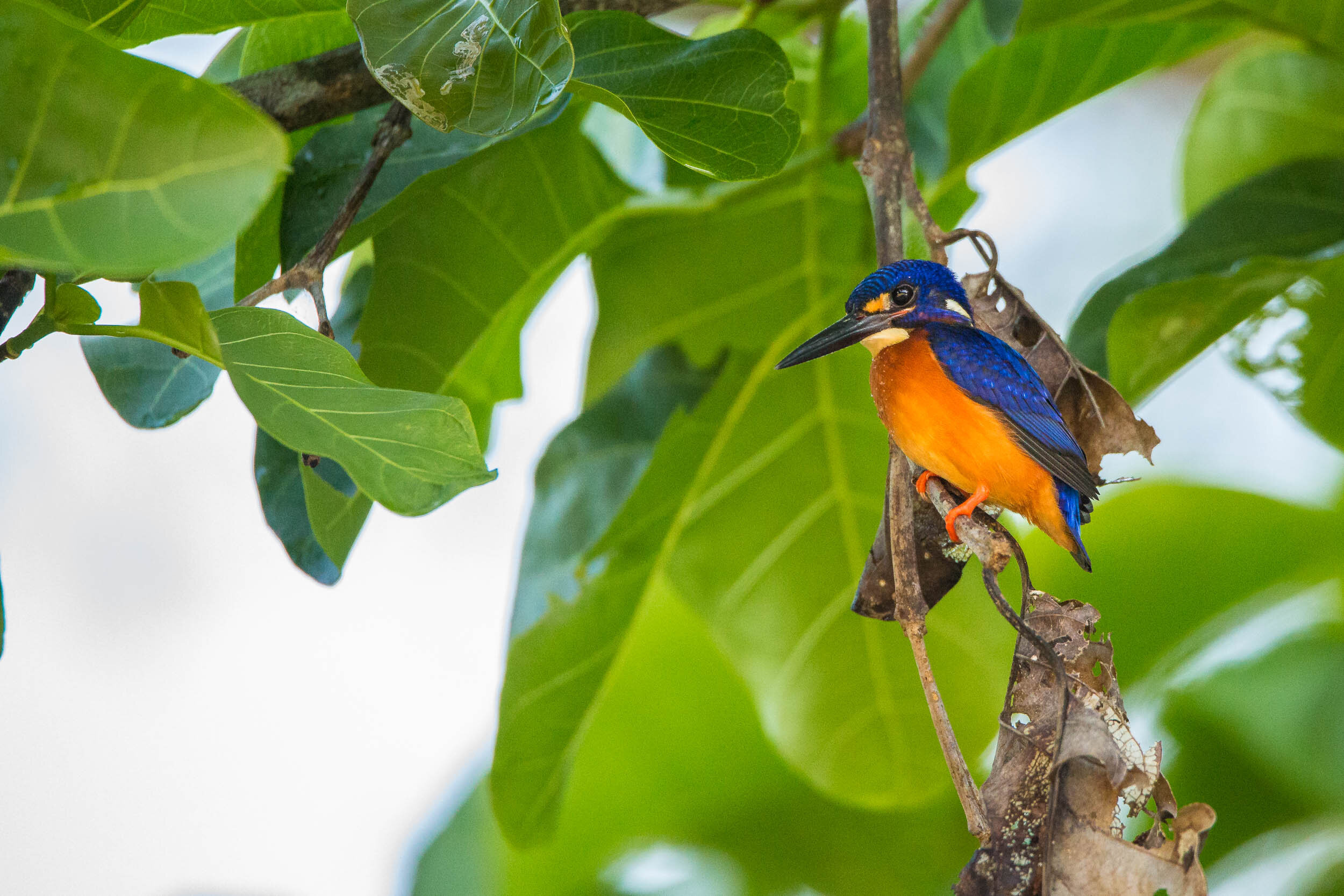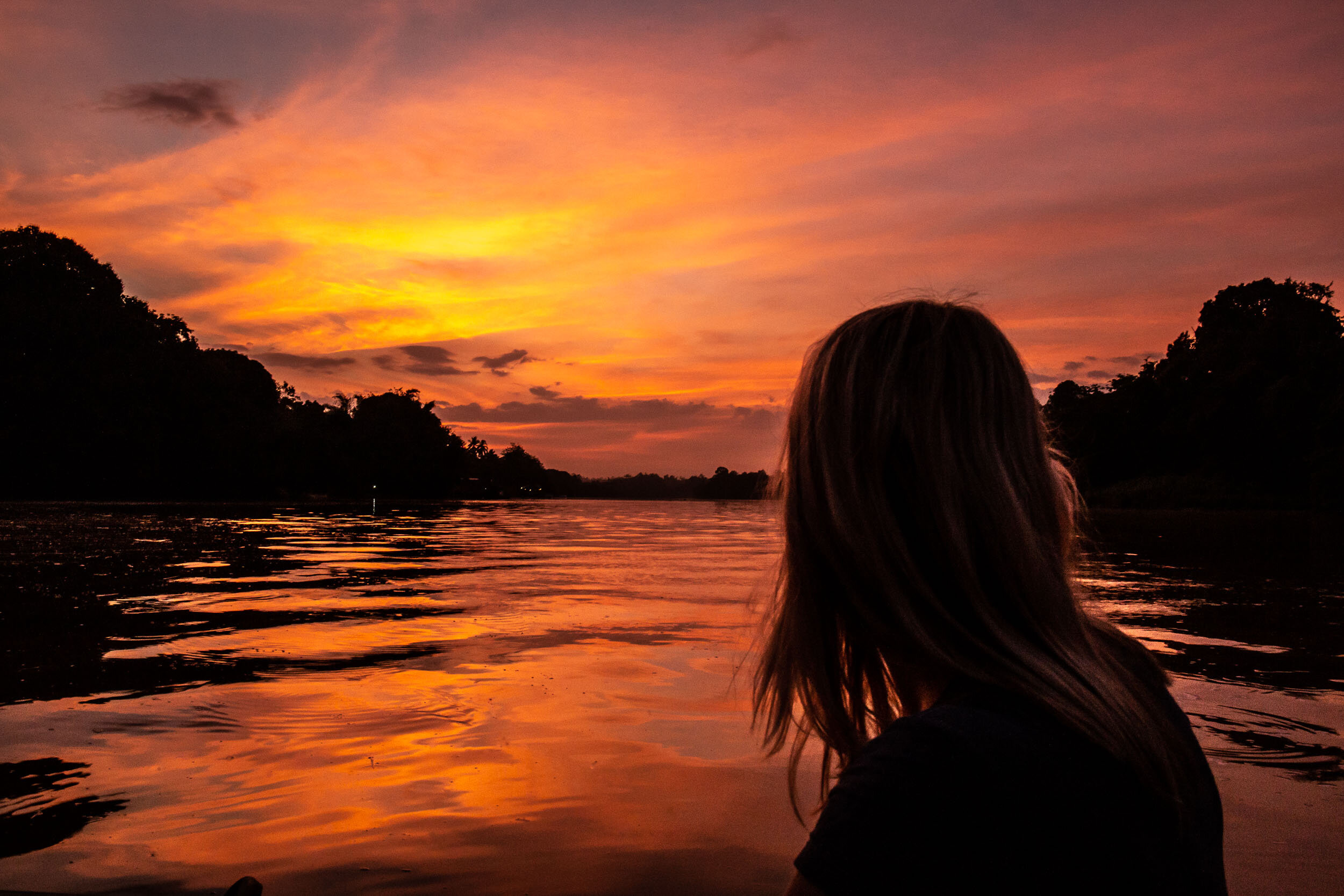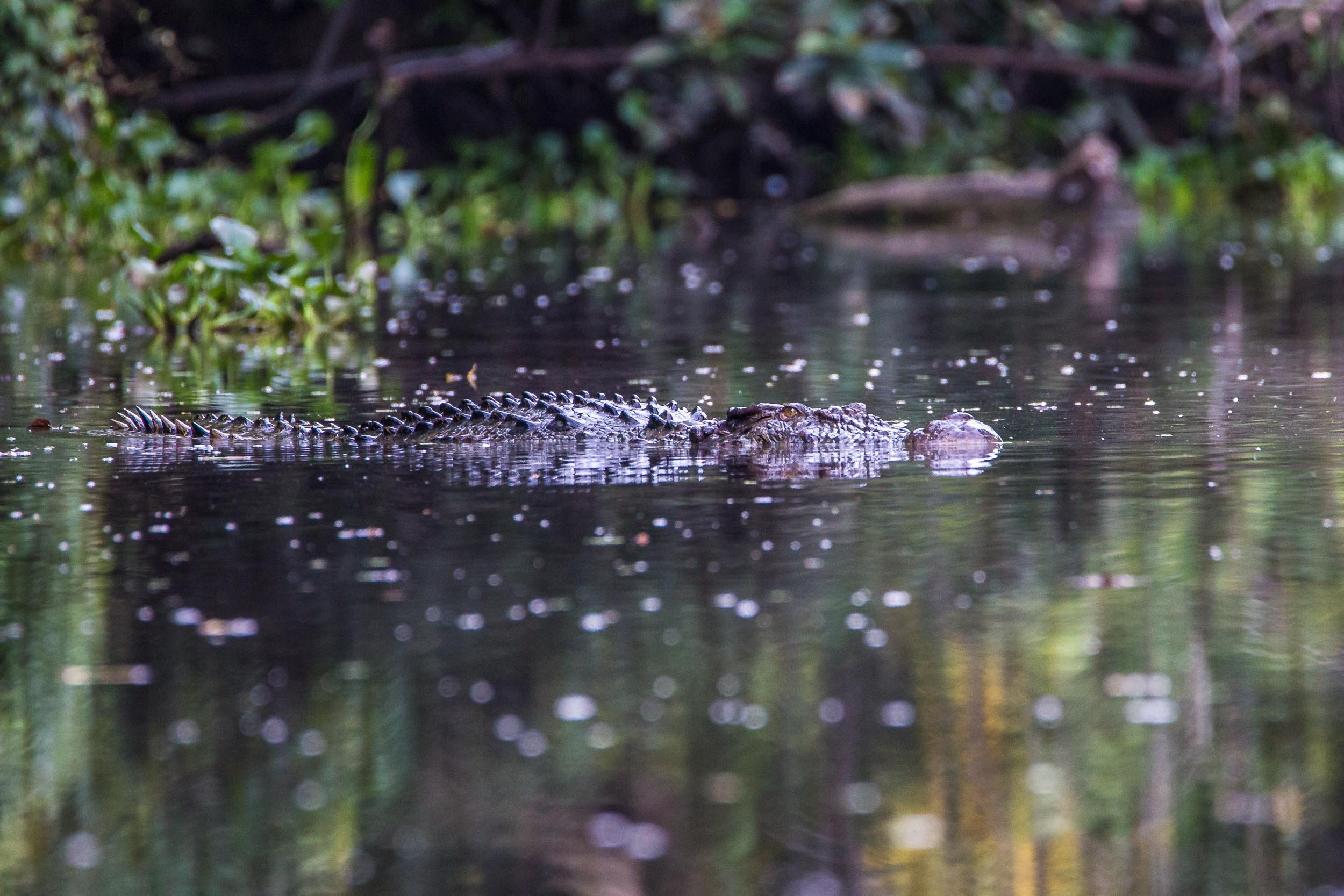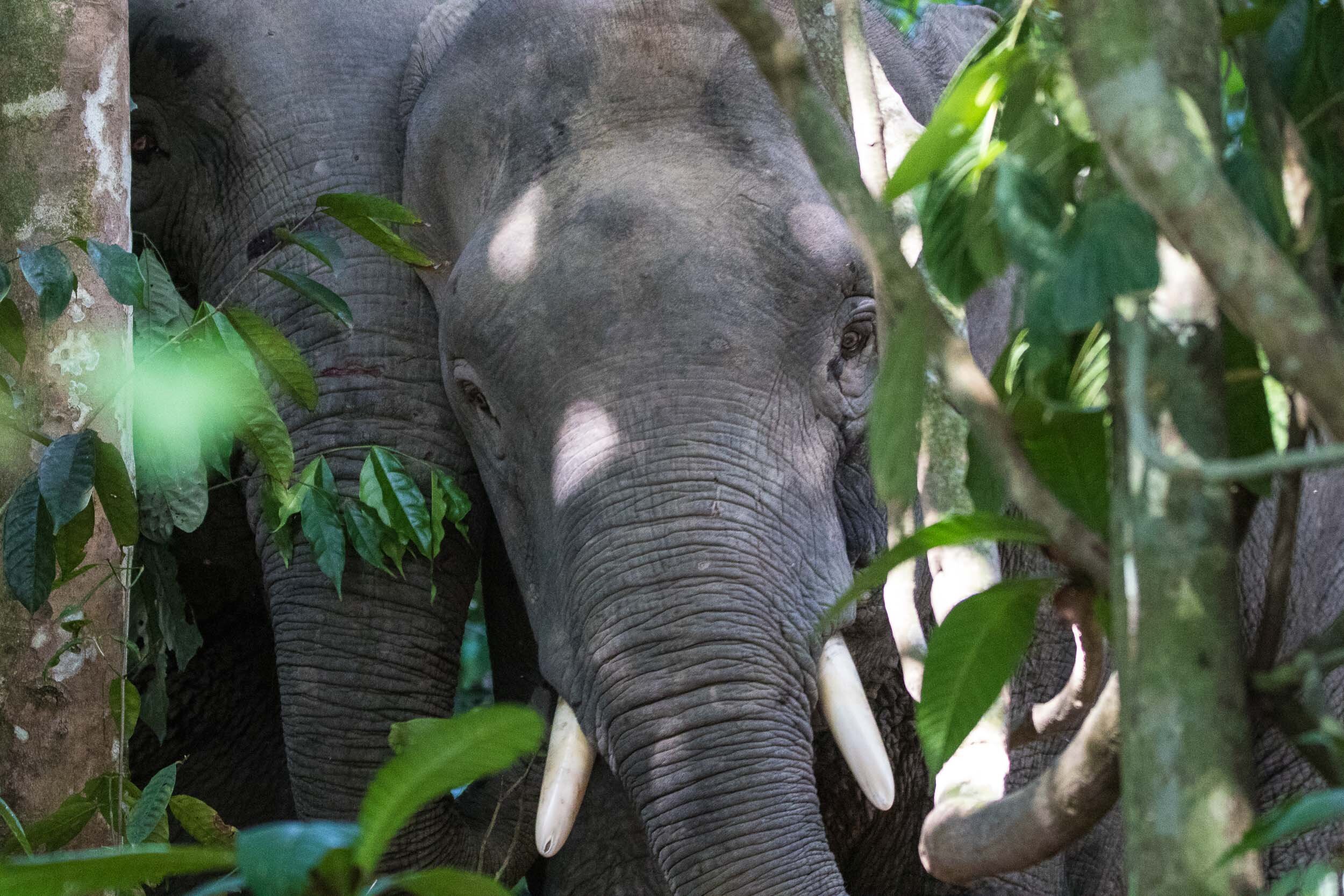Riverside Rainforest, Kinabatangan River Wildlife Sanctuary, Borneo, Malaysia (including Gomantong Caves)
Our home in the Kinabatangan River region is the stunning Sukau Rainforest Lodge. From here, river-based expeditions will take us upstream and downstream to explore the river and its tributaries – atmospheric excursions that epitomise the quintessential Borneo experience.
The shores of the Kinabatangan River are home to large populations of wildlife, the unfortunate consequence of deforestation and development on the adjacent land. As forest and jungle have been cleared from neighbouring property, the remaining wildlife populations have been concentrated in the pockets of wilderness that remain on the shores of the river. The river provides a narrow swathe of protected land than wends its way through the Sabah countryside. The deforestation is readily apparent from the air, and from Google Maps, and is horribly disheartening. But from the river itself, the view is only of the protected area that remains, and the wonderful wildlife within, and it is possible to feel relief as to what has been preserved, whilst acknowledging the grief at what has been lost. There is hope that the increasing tourism in the region will aid the burgeoning conservation movement in Borneo, with preservation of remaining natural habitat, expansion of the nature reserves, and possible reclamation and reforestation of cleared lands, increasing the habitat available for wildlife.
In the interim, the unfortunate reality of deforestation has made the Kinabatangan River region one of the most bountiful wildlife viewing destinations in Borneo. The waters teem with fish and crocodiles. The banks of the river are full of lizards and waterfowl, as well as snakes, colourful butterflies and giant dragonflies. Birdlife abounds – stately herons and egrets, resplendent hornbills and kingfishers, fierce falcons and hawks. And the trees are home to multiple species of primates, including langurs, macaques, gibbons, proboscis monkeys and orangutans. Also present, but rarely sighted, are other mammals, including pygmy elephants, clouded leopards, leopard cats, sunbears, civets, slow loris, tarsiers, flying lemurs and several species of deer.
It is a splendidly rich ecosystem and immensely picturesque. And while the majority of activities in the region involve exploration by riverboat, there are a number of other adventures that can be undertaken while here.
Riverboat Safaris
Riverboat expeditions to explore this region leave their lodges to journey upstream or downstream along the main waterway, detouring into small streams to crisscross between the adjacent lakes and marshlands. The waters are slow moving and languid, naturally murky with silt (but reassuringly almost free from manmade pollution) and in the narrower waterways the overhanging jungle creates atmospheric tunnels of greenery to traverse. Riverboat guides navigate their small boats through the waters, pointing out features in the environment and spotting the wildlife with practiced eyes.
At Sukau Rainforest Lodge, as is typical for lodges in the region, riverboat activities are offered early in the morning and late in the afternoon, avoiding the oppressive heat and humidity in the middle of the day, when both humans and animals tended to find somewhere cool to hide. River safaris utilise small open boats powered by standard motors for longer distances in the main river and small electric propellers for silent cruising in the streams.
Morning expeditions are usually scheduled for just after dawn, although we can highly recommend having the fabulous flexibility of a private boat, and the opportunity for departing slightly earlier, for a stunning sunrise from the river. Sukau Rainforest Lodge offers a light breakfast before departure, but we tended to just grab a cookie or muffin “for the road”, to maximise our time out looking for wildlife. And being first on the river did tend to mean being first (and alone) at sightings.
Safaris usually spend two to three hours on the river, depending on the wildlife sightings, returning to the lodge for a substantial second breakfast mid-morning.
In the afternoon, the process is repeated – following afternoon tea, take to the water again for cruising and wildlife spotting. Although the heat of the day often hasn’t yet begun to abate at the time of departure, the cooling effect of gliding on the water provides a refreshing breeze, and respite from the all-pervasive humidity.
Afternoon excursions again spend two to three hours on the river, watching as the wildlife emerges from the shade of the jungle, to drink and play at the water’s edge. As the last light fades from the sky, the riverboats return slowly to their lodges, with the guides watching closely en route for the nocturnal animals that appear once the sun has set. Lodges also often offer night-time safaris, shorter excursions that depart after dinner, and use spotlights to identify the seldom seen wildlife of the night, including frogs, owls, tarsiers, slow lorises, flying lemur and civets.
Special River Excursions
A special excursion offered at Sukau Rainforest Lodge is the Pygmy Elephant Search. There are several pygmy elephant herds in the vicinity of the Kinabatangan River, but often at significant distances from the lodges, and standard morning and afternoon riverboat cruises may not travel far enough along the river to find them. It is then just a matter of luck as to whether pygmy elephants are close enough to your lodge to be seen during your stay in the river region.
The Pygmy Elephant Search is a special tour from Sukau that departs earlier than the usual afternoon activities (1400 instead of 1600) and utilises a speedboat to cover the distance to where the elephant herd was last seen. With luck, you arrive to see the herd in time for their afternoon bath! On our tour, the herd had moved inland away from the river, but a pair of elephants had remained behind for some “alone time”. And although we were very excited to see them, the sentiment was not reciprocated, and the amorous animals were highly impressive in their displeasure!
Jungle Treks
While the majority of wildlife searching in the region is on river-based safaris, it is also possible to venture into the forest on foot, on guided jungle treks. Whilst big mammal sightings are less likely, due to the sheer density of the foliage, it is an opportunity to experience the flora of the ecosystem at closer quarters, and the multitude of animals that make their home in the undergrowth, like spiders, snakes, insects and small mammals.
At Sukau Rainforest Lodge, the jungle can be explored in comfort on their world-renowned Hornbill Boardwalk. This elevated and covered walkway wends in a 500 metre circuit through the jungle, complete with “elephant passes” to allow the passage of elephant herds that sometimes meander through. All around, the jungle teems with life, and the air thrums with their activity – the ever-present whirr of cicadas, the skittish scurrying of lizards in the undergrowth, the honks of hornbills, the hoots of gibbons in the distance. The macaques make frenetic noises, crashing from branch to branch, screeching and squealing like piglets, dropping fruit against the metal roof with a bang. But the orangutans – the orangutans are serene. They glide through the treetops with just a gentle rustle of the leaves – deliberately, gracefully – long arms outstretched as they make their way from branch to branch, or just hang nonchalantly upside down for a while. An encounter with a wild orangutan on a jungle trek is an unforgettable experience.
Gomantong Caves
It is easy to appreciate why many potential visitors would scratch Gomantong Caves from their itinerary.
The Gomantong Caves are an expansive cave system inside Gomantong Hill, about a thirty minute drive from the Kinabatangan River. The only cave open to visitors, Simud Hitam, is a vast cathedral-like space, with mossy-green walls and soaring ceilings, pierced with thin beams of light from fissures overhead.
Whilst this sounds scenic, it is the occupants of the cave that transform it from picturesque attraction to hellish underworld. The cavern is shared by the largest colony of bats in Borneo, who roost in the cave by day, and a vast population of swiftlets, who roost in the cave by night. The swiftlets’ saliva-strewn nests are famous as the source of the inexplicable delicacy birds-nest soup, and the Gomantong Caves are one of the richest sources of this crop.
Inside the cavern, the air thrums with the beating of wings and the high-pitched squeaks of both bats and birds, especially at dusk when the birds are returning and the bats are departing. The cave is crowded with animals in flight, and you can feel the birds and bats flitter past, eerily close in the low light. And yet, this is still not the part that is disconcerting.
Instead, it is the guano. Hundreds of years of dung from hundreds of thousands of birds and bats has accumulated to many, many metres deep. And more is constantly raining down from above. Even the recently constructed wooden walkway feels thick and spongy underfoot. The air is acrid with the smell of ammonia – pungent and choking and eye-watering. And in the shadows, the dung appears to be moving. And yes, it is. The massive piles of guano are home to millions upon millions of cockroaches and other invertebrates – spiders, millipedes, centipedes and scorpions, scuttling through the guano, up the walls and along the walkway and its railing! It is truly a scene out of Indiana Jones and the Temple of Doom for those with an insect phobia!
Exploration of the cave itself is along a narrow boardwalk, that wends its way in a short circle through the cavern. In addition to the wildlife, it is possible to see the death-defying equipment that is used to scale the sheer walls and harvest the bird nests, as well as a small guardhouse that is needed to protect this valuable harvest from theft. But between the smell, the roaches and the raining excrement, there is little incentive to linger in the cave longer than about 10 minutes.
Despite this ghastly description, and even if you choose to not actually go into the cave, a visit to the Gomantong Caves region is a must – the wildlife viewing in the surrounding forest is some of the best, and most accessible, in all of Sabah.
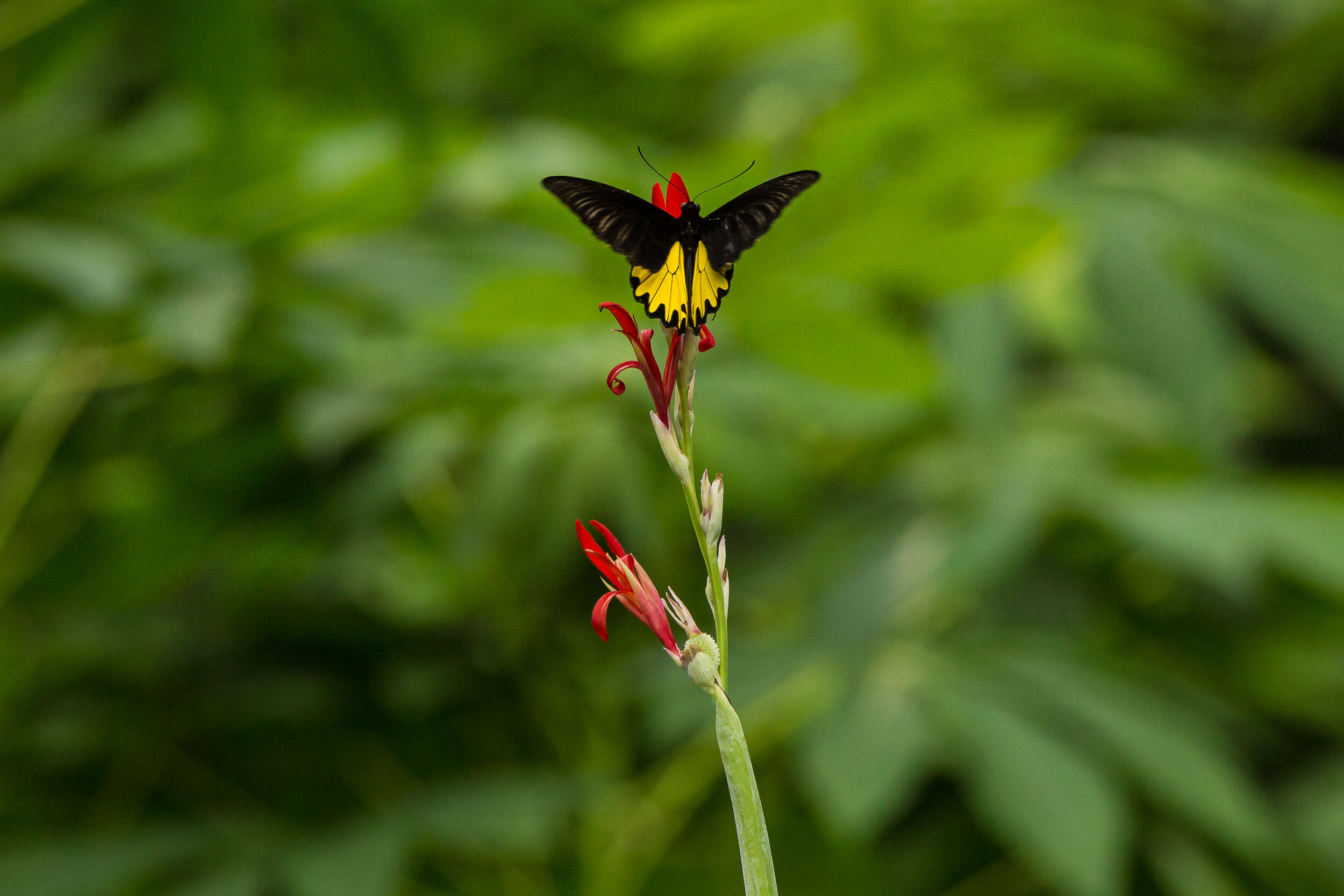
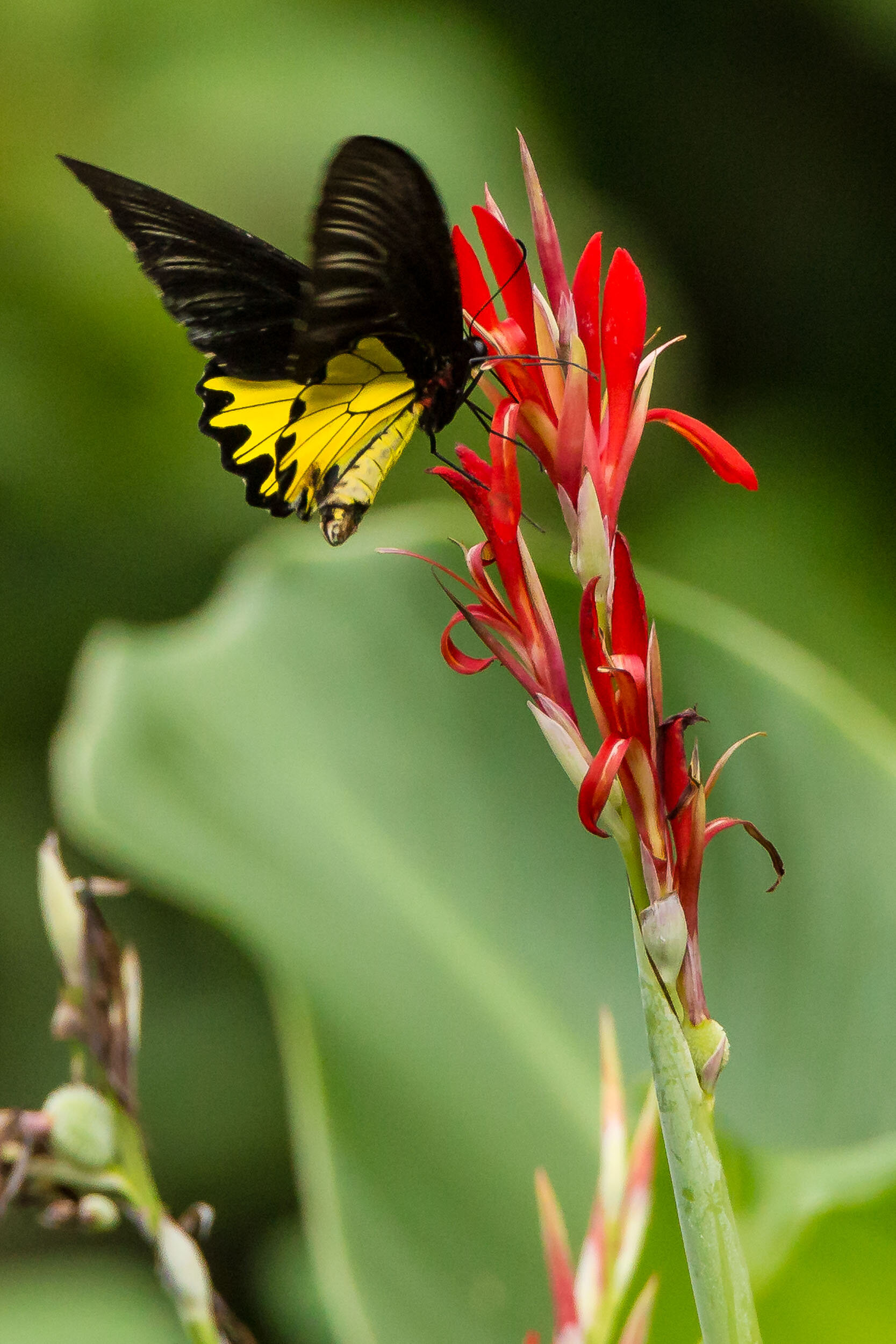
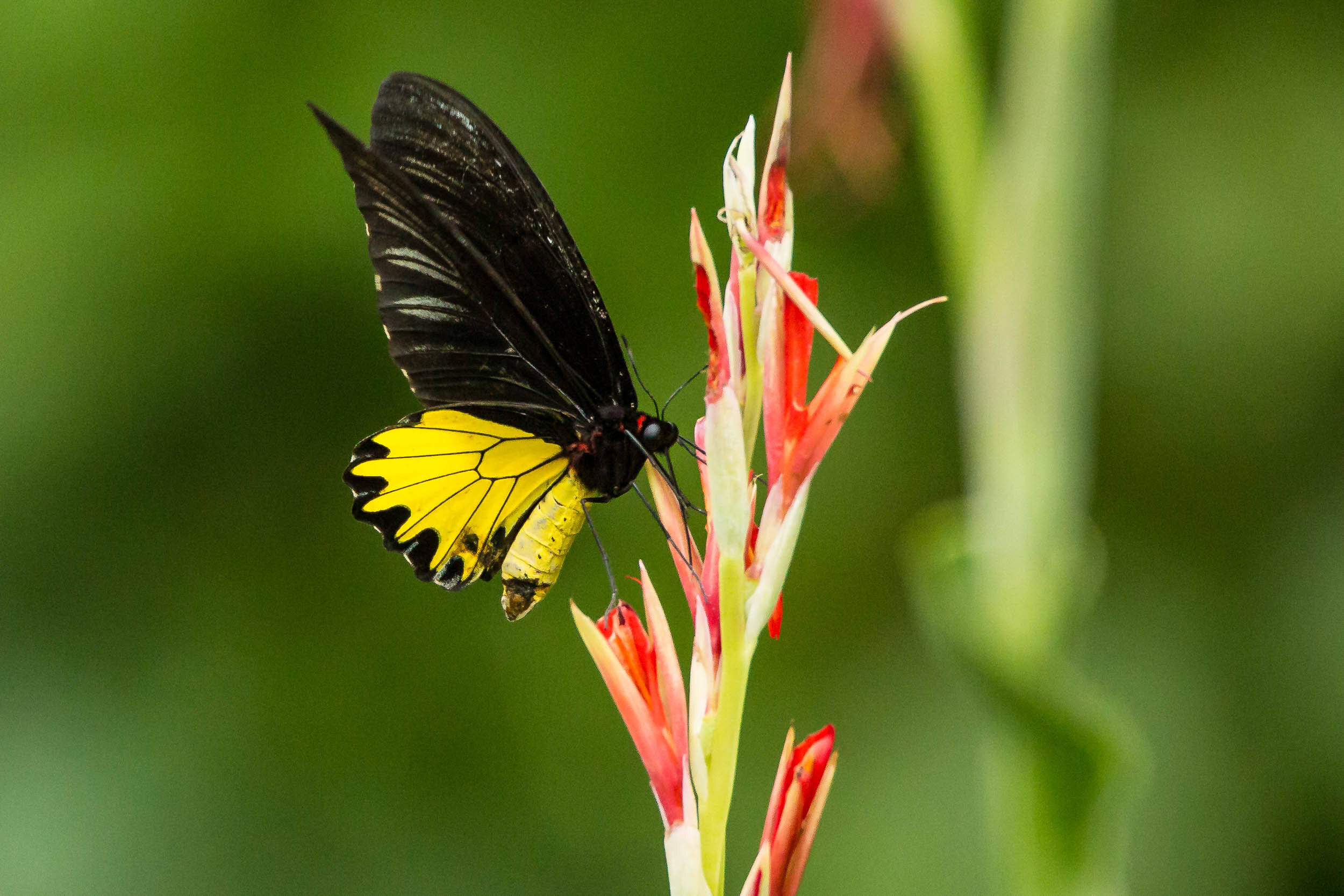
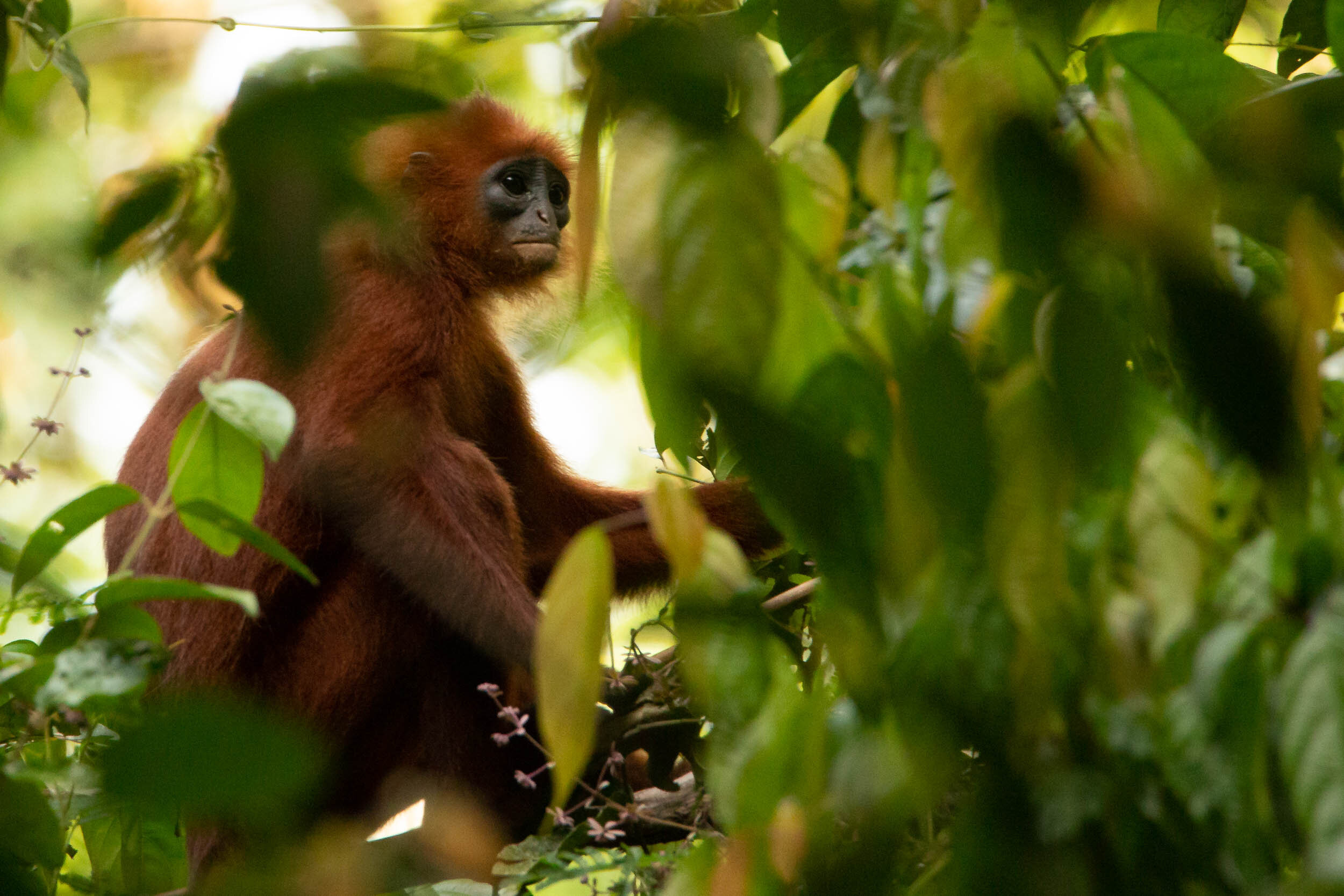
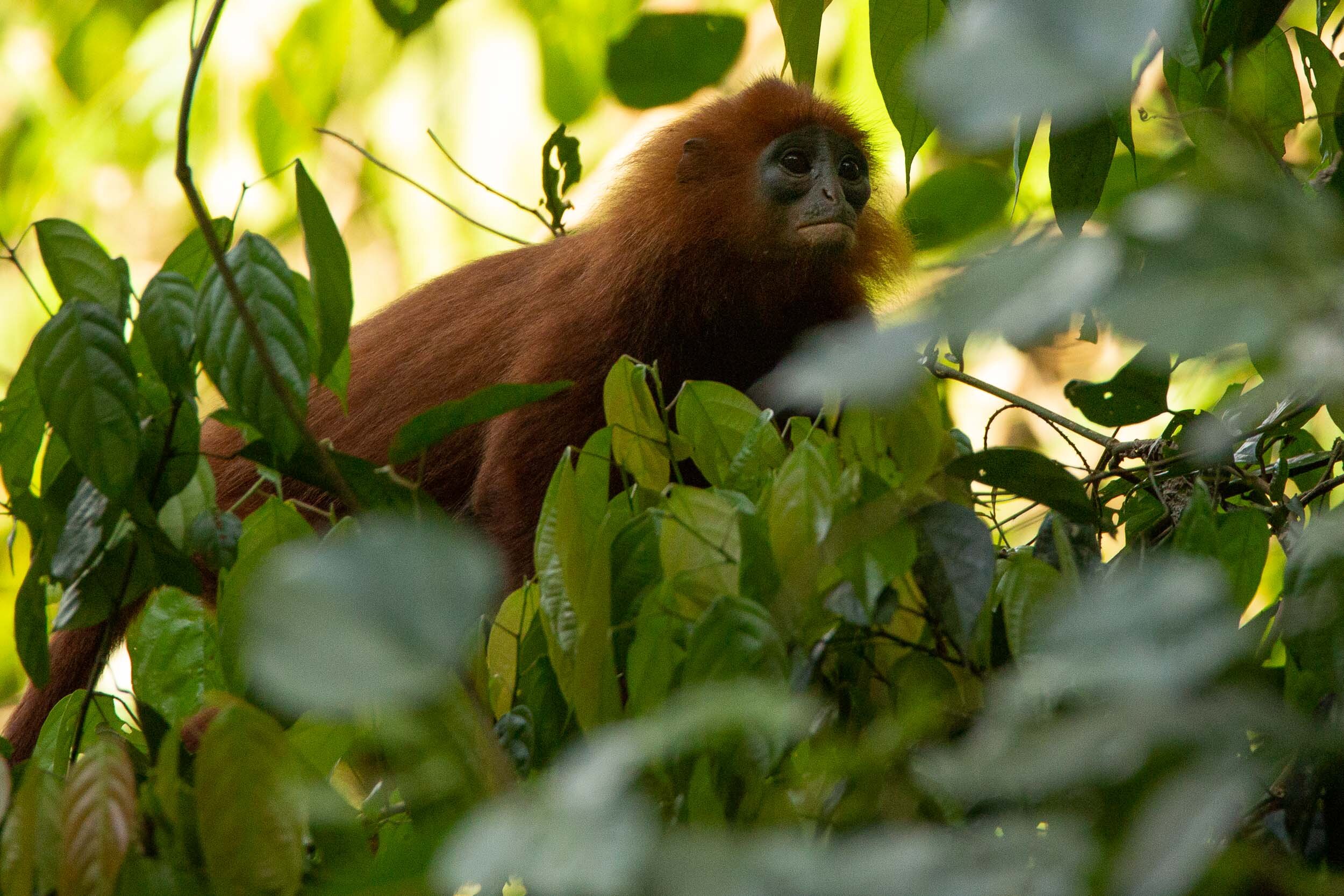
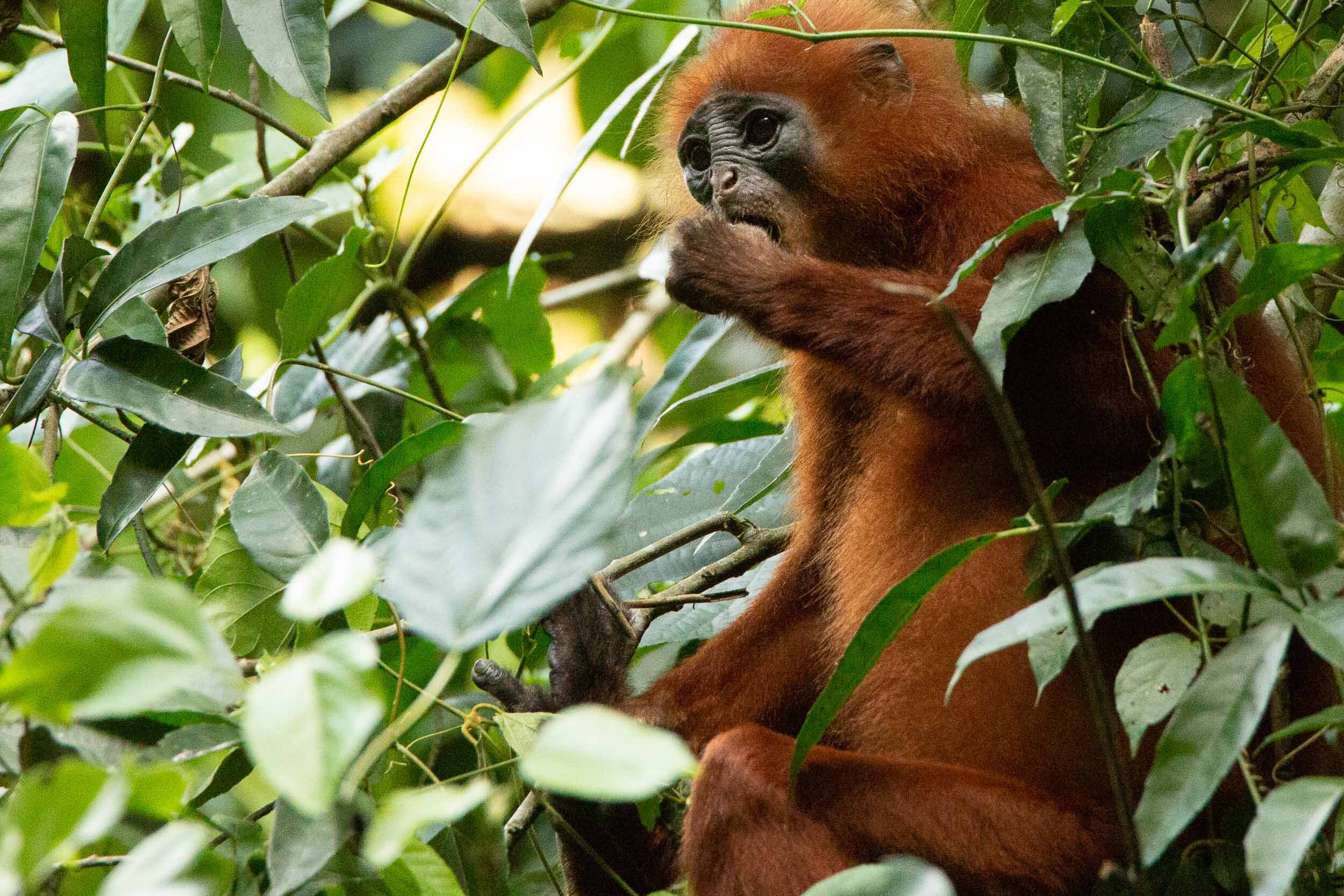
From the entrance gate to the cave, a raised wooden boardwalk, slick with moss and lichen, traverses a lush jungle of trees and vines and exuberant undergrowth. In the canopy overhead, there are families of red leaf langurs and silver leaf langurs. And in the forest around the caves, the chances of seeing orangutans are very high indeed.
In our time at the cave, we saw a total of five wild orangutans. First, a mother and baby clamber up the trees at the caves entrance. Just as they are disappearing into the depths of the jungle, the screeching of a macaque alerts us to the presence of an adult male orangutan in a nearby tree – he puts on a fruit eating display from within the branches, before making a nest and settling in for the evening. And finally, another mother and very young baby emerge from canopy near the walkway, then amble down the path and dart back into the undergrowth. And rest assured that these are true wild orangutans – they are not fed or coaxed into the area in any way. It is just that they are a little more accustomed to the sight and sounds of humans and so a little more relaxed, and a little less flighty, in our presence.
In Summary
Teeming with wildlife, the scenic forests and waterways of the Kinabatangan River region are one of the best locations in Borneo to see these unique animals in their natural environment, and an unmissable inclusion on your Borneo itinerary. We highly recommend a minimum of a 3 night stay in the region, and for the discerning adventure traveller, the lodging of choice is Sukau Rainforest Lodge.
Bonus: Wildlife Viewing Tips
As with all wildlife viewing, it is very much pure chance as to what you do and don’t see. The viewing is excellent in the Kinabatangan River area and you have very good chances of seeing what you came for. But always be prepared for the fact it just might not be your turn. As an example, we understand there were a couple of very unlucky, and therefore somewhat disappointed, groups during our stay. While at the same time we were lucky enough to see all of the Borneo Big 5 including some excellent sightings and photo opportunities.
Therefore, whenever possible we highly recommend private wildlife tours. It means much more flexibility and substantially increases your chances of good sightings and of achieving that perfect photo.
Wildlife viewing is as much about both ‘timing’ the jungle as well as ‘time in’ the jungle.
With a private tour you can arrange to leave a little earlier, meaning you are the first in an area, before the animals are expecting visitors or have been scared off. (This is particularly relevant down the small side rivers and streams.)
Further, if you know there is an animal but you just can’t quite see it, as you don’t have to answer to other guests, you can choose to wait as long as you want and ultimately get that perfect sighting (and image).
Finally, you can also stay out just that little bit longer, again increasing your chances of a last minute sighting.
When you need to act quickly, you aren’t delayed by others. When you need absolute quite, you can control your noise levels. You can move about your boat (or vehicle) much more freely and easily providing optimised viewing positioning, faster camera or lens changes and generally more comfort ensuring you are better able to put in the longer hours, at full attention.
